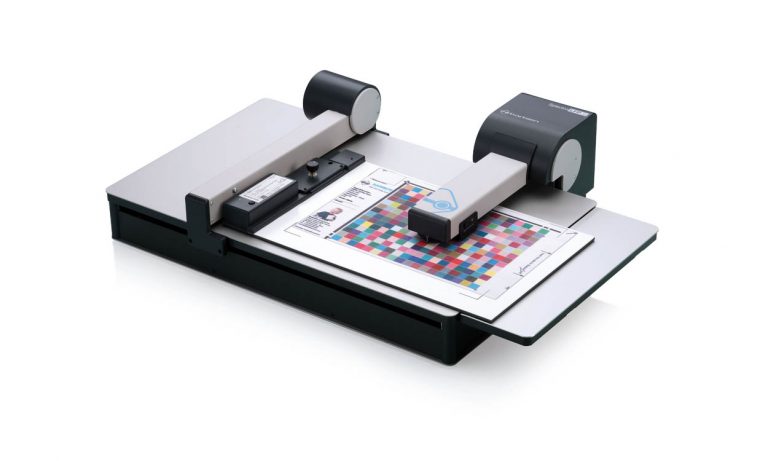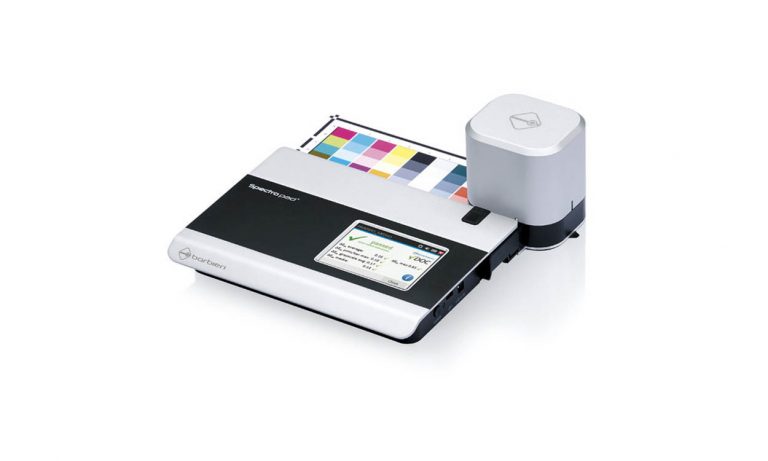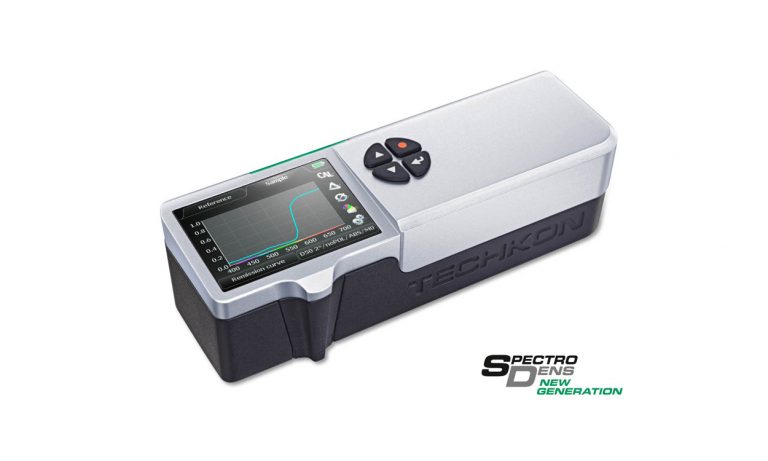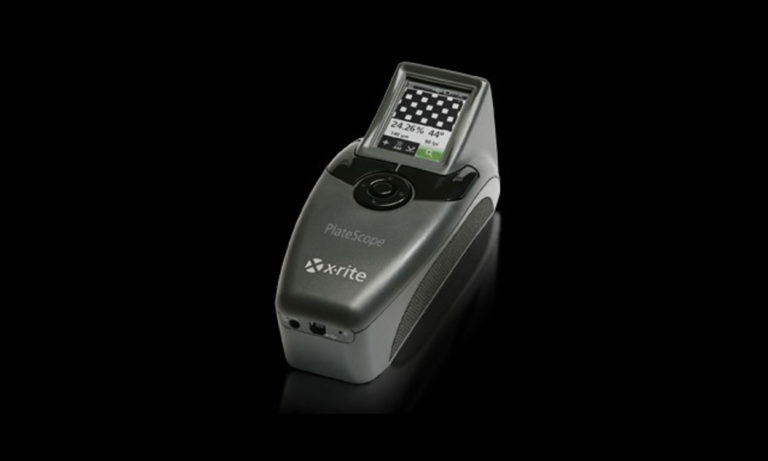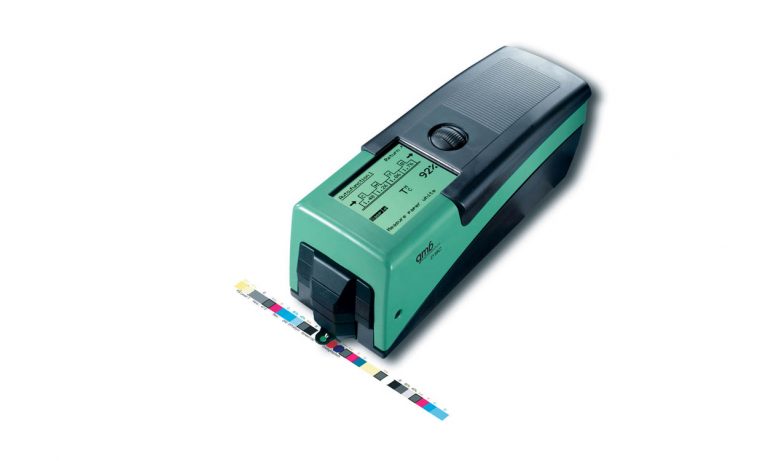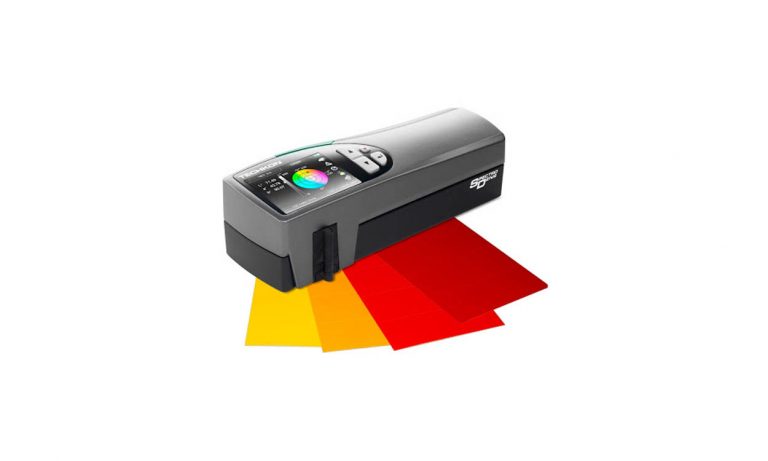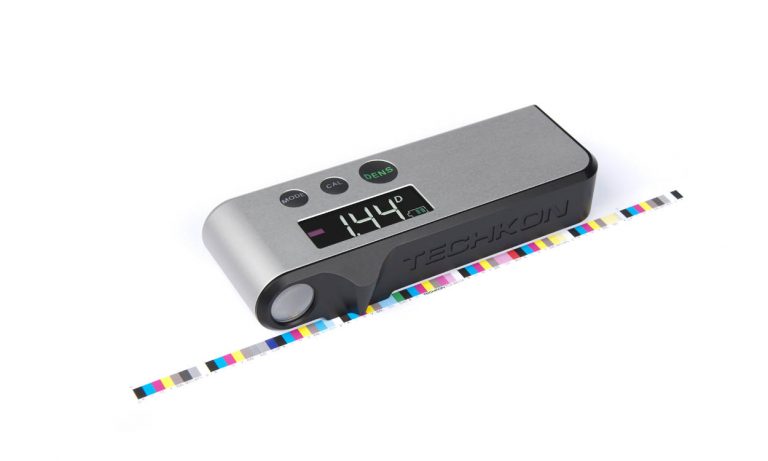What is the difference between a densitometer and a spectrophotometer?
A densitometer reads reflected light through filters of the complementary colour i.e. cyan through a red filter, magenta through green and yellow through blue. The thicker the ink the more light is absorbed and less reflected which is then presented as an optical density readout. Obviously less reflected light is seen as a more dense ink sample.
The filters known as Status filters are designed specifically for the task and region required. In Australia we use the European standards and so therefore use Status E filters. In the USA Status T are used. The same patches read by the same densitometer set to use Status T filters and then Status E filters would show a difference in the Yellow readout with a higher density shown in that colour using the Status E selection.
Photography has its own filter set as well, Status A. A densitometer usually can provide other density based measurements as well such as dotgain or dot area. Densitometers while extensively used in process monitoring of silver halide photographic processing are most commonly used press side. For the obvious reasons of convenience and versatility in use they are self contained i.e. battery powered and have some sort of small display built in. Traditionally they can be user calibrated and a calibration card is provided with CMYK patches and reference densities.
These calibration cards must be among the planet’s most easily lost items as so many print houses I have been in have lost them. However another quality calibrated densitometer can be used as a master and even CMYK patches printed in house can then be measured by the master densitometer and the second densitometer can be be matched to those values. It’s science but it’s not rocket science.
The important difference between a densitometer and a spectrophotometer is that a densitometer cannot read colour whereas a spectro loves colour work and was made for it. Reading reflected light through a filter and putting a corresponding colour’s capital C, M etc on the display is not reading colour, you do need a spectro for that. A spectro reads spectral values which are the various wavelengths over the visible spectrum divided into small segments, usually 10 nanometers. A spectrophometer is incredibly versatile and the readout modes are limited only by the accompanying software. A spectro may be fully self contained like a densitometer or tethered to a computer via a USB cable.
A self contained spectro designed for press side work like a densitometer is sometimes called a spectro-densitometer, but only by people with time on their hands. A spectro is easily and quickly calibrated by the user and is in fact required to be calibrated often for consistent readings. A calibration will compensate for temp change caused both by ambient and mainly bulb temperature changes during use. On this point however be well aware that while calibrating a spectro is extremely easy, it is done on a single white plaque, this calibration plaque is unique to the device and if you lose it your future employment will be up for discussion. The spectro will have to be sent away to the manufacturer for recalibration and another custom plaque provided.
A spectro can do everything a densitometer can and a whole lot more. A Techkon Spectrodens or an X-Rite eXact is a colour toolkit in a box. If you want to get an Lab or Lch value or a Delta E value as well as plot a dotgain curve, then a spectro is what you will need.
- Platescope

